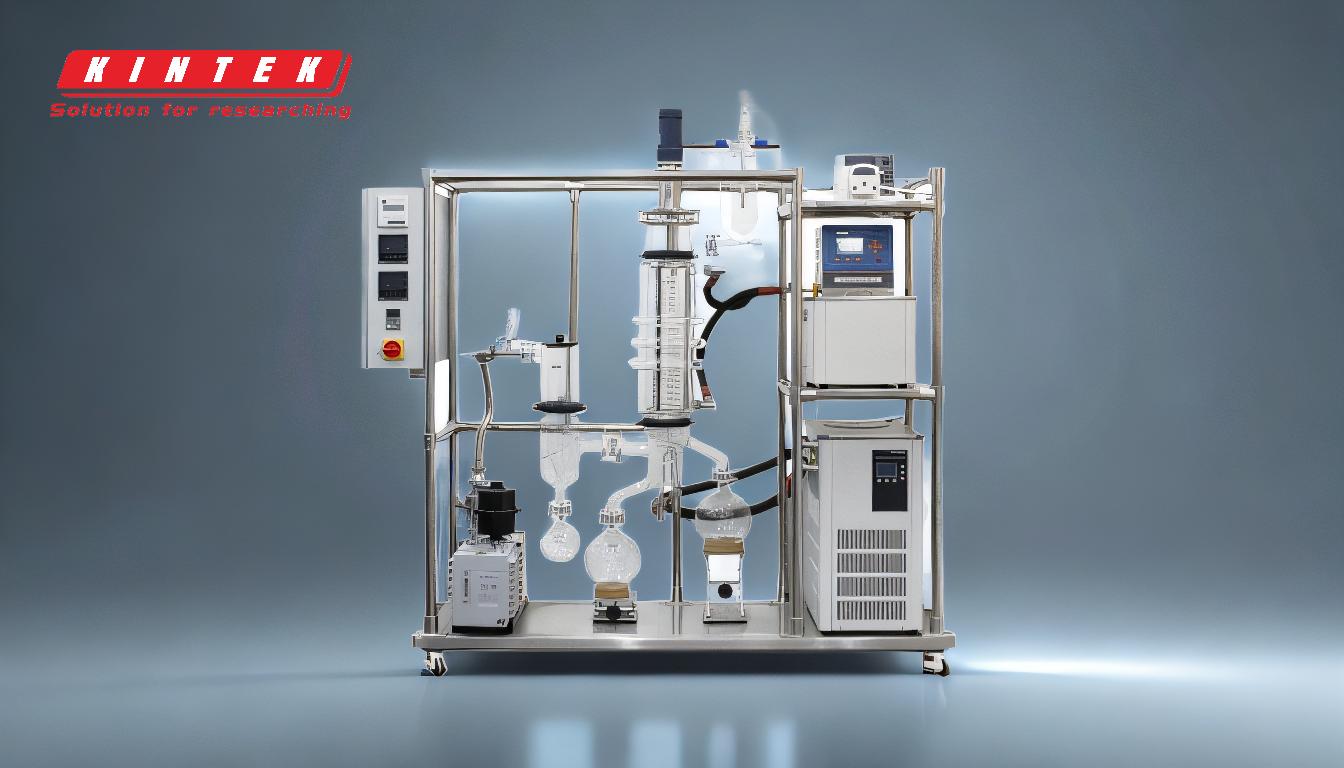The distillation method of THC involves a multi-step process that begins with the extraction of crude oil from cannabis plants using solvents like CO2, hydrocarbons, or ethanol. This crude oil undergoes winterization to remove waxes and impurities, followed by filtration and solvent removal. The purified oil is then subjected to short path distillation, where cannabinoids like THC are isolated and concentrated by controlling temperature and pressure. This process yields highly pure THC distillates, often reaching up to 99% purity, while also separating terpenes and removing contaminants.
Key Points Explained:

-
Extraction of Crude Oil:
- The process begins with extracting raw oil (crude oil) from cannabis plants using solvent-based systems like CO2, butane, propane, or ethanol.
- These solvents are cooled to extremely low temperatures (as low as -80°C) and compressed until liquefied to maximize extraction efficiency.
- The crude oil typically contains 60-80% THC/CBD, along with other plant compounds like waxes, lipids, and chlorophyll.
-
Winterization:
- Winterization is a purification step where the crude oil is mixed with ethanol and chilled to -40°C.
- This process solidifies waxes, lipids, and other impurities, making them easier to separate from the oil.
- The mixture is then filtered to remove these solidified compounds, leaving behind a cleaner oil.
-
Solvent Removal:
- After winterization, the oil still contains residual ethanol or other solvents used in the extraction process.
- A rotary evaporator is used to remove these solvents, ensuring the oil is free of impurities and safe for further processing.
- This step is critical to achieving a high-purity final product.
-
Short Path Distillation:
- Short path distillation is the core method for isolating and concentrating THC.
- The process involves heating the purified oil in a vacuum environment, which lowers the boiling points of the compounds.
- Cannabinoids like THC are separated based on their unique boiling points, typically between 157-175°C.
- The vaporized THC is then condensed in a cooler condenser unit (60-70°C) and collected as a highly concentrated distillate.
-
Separation of Compounds:
- Short path distillation not only isolates THC but also separates other cannabinoids (e.g., CBD, CBG), terpenes, and flavonoids.
- Terpenes and flavonoids are collected individually based on their boiling points, preserving their aromatic and therapeutic properties.
- Contaminants like solvents, molds, and pesticides are removed as undesirable by-products.
-
Purity and Final Product:
- When performed correctly, short path distillation can produce THC distillates with up to 99% purity.
- The final product is a clear, viscous oil that is highly potent and free of impurities.
- This distillate can be used in various applications, including recreational and medicinal products like vape cartridges, edibles, and tinctures.
By following these steps, the distillation method ensures the production of high-quality THC distillates that meet the stringent requirements of both recreational and medicinal markets.
Summary Table:
| Step | Process | Purpose |
|---|---|---|
| Extraction of Crude Oil | Use solvents like CO2, butane, or ethanol to extract oil from cannabis. | Obtain raw oil containing 60-80% THC/CBD and plant compounds. |
| Winterization | Mix with ethanol and chill to -40°C to solidify waxes and impurities. | Remove waxes, lipids, and other impurities for cleaner oil. |
| Solvent Removal | Use a rotary evaporator to remove residual solvents. | Ensure oil is free of solvents and safe for further processing. |
| Short Path Distillation | Heat oil in a vacuum to isolate THC based on boiling points (157-175°C). | Concentrate THC and separate other cannabinoids, terpenes, and flavonoids. |
| Final Product | Collect THC distillate with up to 99% purity. | Produce clear, potent oil for vape cartridges, edibles, and tinctures. |
Discover how THC distillation can elevate your cannabis products—contact our experts today!











